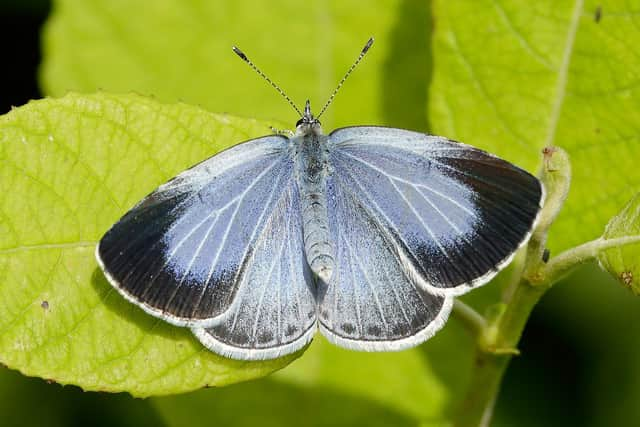Climate change fears as Scotland's butterflies and moths continue downward spiral
Results from the 2021 Big Butterfly Count, a nationwide initiative run by wildlife charity Butterfly Conservation, paint a worrying picture for butterflies and day-flying moths.
A total of 27,997 of the insects were recorded in Scotland, part of 1,238,405 counted across the UK.
Advertisement
Hide AdAdvertisement
Hide AdThe average number seen in Scotland this summer was down by 7 per cent from last year, a smaller decline than the UK-wide drop of 14 per cent.


Some of the country’s best-loved species, including Small Tortoiseshell and Peacock, were among those demonstrating declines in Scotland.
This was a scenario echoed across the UK, with the iconic Peacock butterfly suffering its lowest numbers since 2012.
And the Small Tortoiseshell, once a frequent visitor to gardens in the UK, had its third-worst season in the history of the Big Butterfly Count and shows a significant long-term decline in Britain.
There was better news for other species, which have increased since the same time 12 months ago.
The Ringlet, for instance, saw numbers jump by 53 per cent, while the Meadow Brown and Large White rose by 38 per cent and 32 per cent respectively.
However, scientists at Butterfly Conservation have urged caution over the increases, which are likely a result of untypically low numbers seen last year.
Meanwhile, the delicately coloured Holly Blue – a recent arrival in Scotland – has enjoyed a massive 230 per cent increase in abundance north of the border in the past year, bucking the UK-wide fall of 58 per cent.
Advertisement
Hide AdAdvertisement
Hide AdThe Scotch Argus was included in the target species list for the Big Butterfly Count this year, with nearly all sightings in Scotland – half of them in the Highlands.
This year’s Big Butterfly Count, which took place from July 16 to August 8, saw more surveys carried out in Scotland than ever before.
A total of 5,420 surveys were submitted by 4,005 people across the country, up by 35 per cent and 14 per cent respectively on 2020 figures.
But the charity has warned that urgent action must be taken to reverse declines if we want to save Scotland’s butterflies and moths for future generations.
Dr Zoë Randle, senior surveys officer at Butterfly Conservation, said: “This year’s results show that the average number of butterflies and moths per count is the lowest we’ve recorded so far, and the average number in Scotland was down by seven per cent on 2020 figures.
“More counts are undertaken and submitted year on year, but it seems that there are fewer butterflies and moths around to be counted.”
Butterflies and moths are important indicators of the health of the environment, so declines in abundance are a serious cause for concern.
Unseasonable conditions across the UK this year, linked to climate change, have had a significant impact on numbers, according to the charity, raising concern that predicted increases in extreme weather could have a potentially devastating impact on some of the nation’s favourite insects.
A message from the Editor:
Thank you for reading this article. We’re more reliant on your support than ever as the shift in consumer habits brought about by coronavirus impacts our advertisers.
If you haven’t already, please consider supporting our trusted, fact-checked journalism by taking out a digital subscription.
Comments
Want to join the conversation? Please or to comment on this article.
